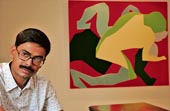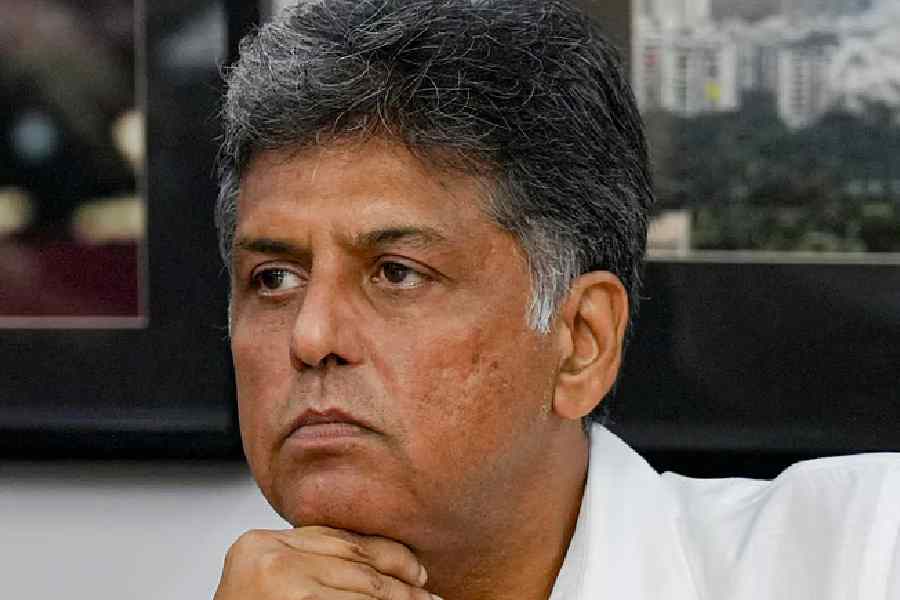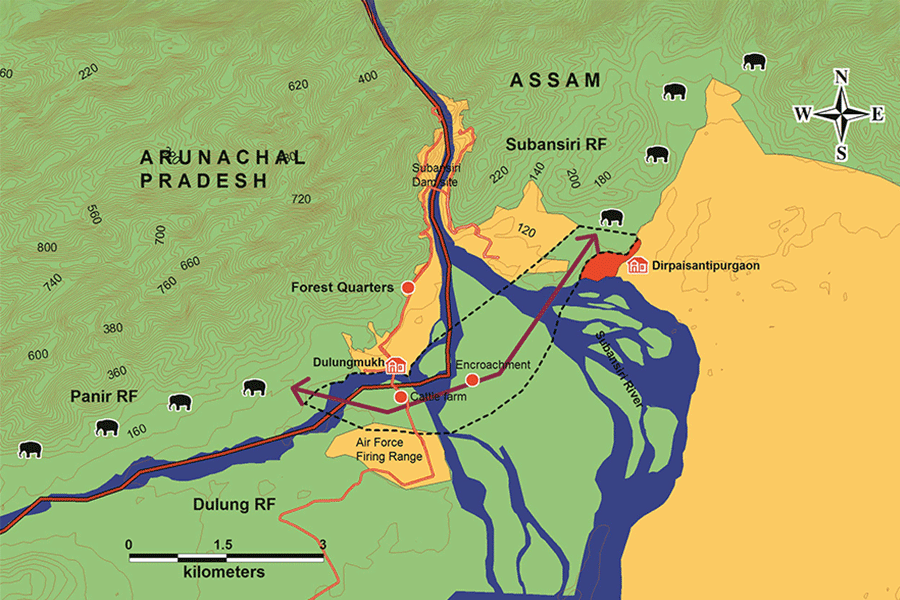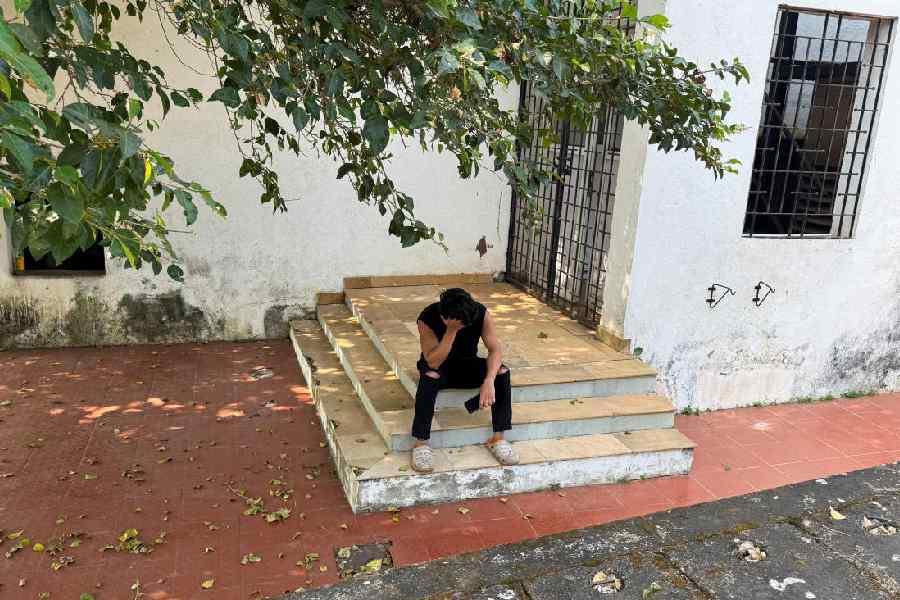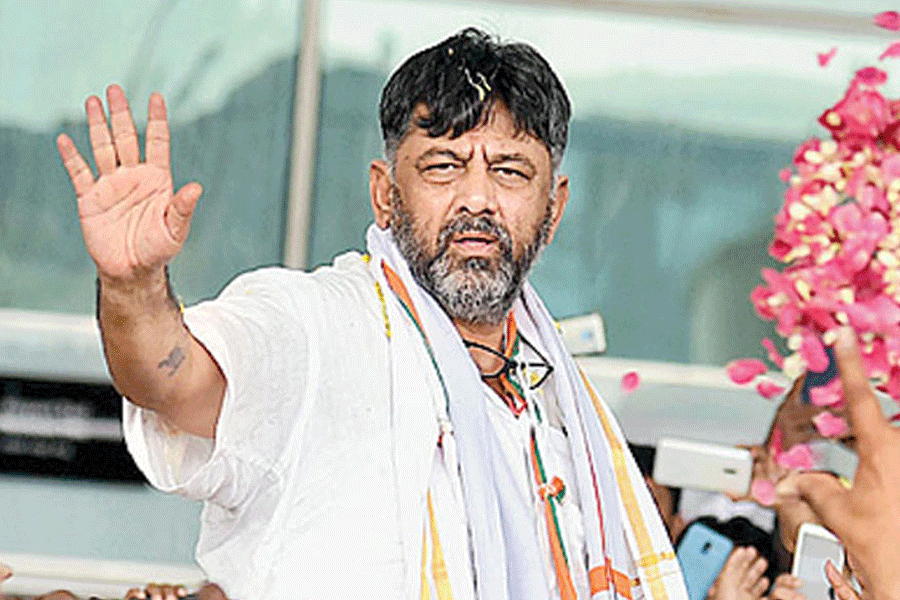 |
| SEAMLESSLY FLOWING: Artist Sumitro Basak with one of his works. Picture by Amit Datta |
The exhibition space at CIMA Gallery is filled with his recent works, to be unveiled on Wednesday. Yet, the first thing that Sumitro Basak asks is whether he can take us through his earlier works. The 32-year-old artist is eager to start from the very beginning. He is rooted in reality.
So, out comes a laptop and with it, his work from the Kala Bhavan days. Neatly arranged folders hold a wealth of avian studies, still life paintings, naturescapes and finely detailed sketches in the trend of Japanese lithography. There’s even a video of his scrapbook from the college days, where papercuts spring to life.
The works offer a glimpse of Sumitro’s uniquely individual visual language. The self in mocking postures, assimilation from pop culture, an acute sense of surroundings and political awareness — lined with a latent sense of humour — are attributes that flow seamlessly into Sumitro’s present-day art.
Visitors to Sumitro’s first solo show at CIMA, On The Verge, will be greeted by a large triptych, Mera Image Mahan, a Warholesque collage with his passport-sized photographs, playing roles at ease.
This is in direct contrast to the size of his canvases (often measuring 6ftx4ft and often bare), though Sumitro maintains the groundwork is still done in sketchbooks.
“The language I work in today developed as a reaction. I knew my audience in Santiniketan; I could gauge their responses to my work. Faced with a wider urban audience I retracted, in a way. The papercuts were a way of concealing the actual art these canvases held. And there was enough sarcasm in my work not to have been displayed anywhere, ever,” says Sumitro.
“I cut more, and draw less these days,” says the affable artist. “The sarcasm still exists. It’s been modified, but not diluted.” Is he still angry? “I hope so,” he smiles.
The smile, though, isn’t the benign façade of an artist lost in his Utopia. Which brings us to I Wanted To Cry, But I Couldn’t, a translucent projection of his own photographs on a mocking self-portrait. The work features him going through a gamut of emotions — ending with silent screams.
Nandigram? Sumitro falls silent for a moment, and then speaks up. “The drama that has been going on in this state over the past year is fascinating; what in Bengali we call brimful with pancha ras.”
Hailing from Burdwan, Sumitro’s awareness of rural realities is sound. When he speaks of land-grabbing, it’s not without a sense of history. Which is why he shuns morchas. Instead, he pours out his thoughts on canvas. Where he smiles and he cries. Where is he is on the verge.

